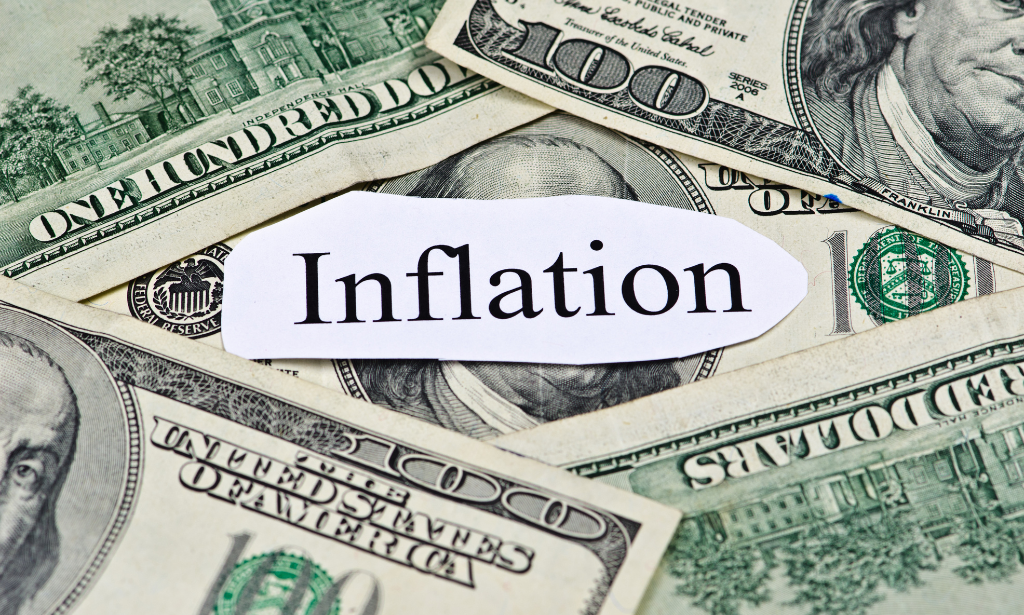Both headline and core measures of US CPI landed 0.1pp above expectations on a monthly basis in March, printing at 0.4% MoM respectively on a rounded basis. On an unrounded basis, the story is fairly similar.
Headline inflation printed at 0.378%, down just 0.068pp from February, while the core measure was virtually unchanged on the month at 0.359%. In annual terms, this left core inflation to hover at 3.8%, while headline inflation increased for the second consecutive month, rising 0.3pp to 3.5% YoY. The details of the report made for similarly uncomfortable reading for the Fed. Most notably, with the pace of core inflation virtually unchanged in March and the pace of inflation in key shelter components cooling (rent of primary residences fell 0.05pp to 0.41% and owners’ equivalent rent was unchanged at 0.44%), the Fed’s preferred supercore measure of inflation rose once again, increasing from 0.476% in February to 0.646% MoM. This resulted in the 3-month annualised rate increasing from 6.9% to 8.2% respectively, its highest level since June 2022. Back then, the Fed was merely 75bps into a 525bps hiking cycle and had just started to increase rates in 50bp increments.
Whichever way the data is sliced and diced, the takeaway for markets is simple: the US economy is running uncomfortably hot for the Fed, meaning 3 rate cuts this year could now be viewed as a goal and not a baseline.
Traders have come around to this idea following today’s release, trimming odds of a June cut from 55% to less than 20%, while less than two cumulative rate cuts are now priced for the year for the first time this cycle. This has led Treasury yields to spike considerably higher, with the front-end up over 15bps to trade just shy of 5%, while yields on the 10-year have climbed over 10bps, initially breaking above 4.5% before retracing shortly after. The move in yields has had significant repercussions in FX markets. The dollar DXY index has rallied seven tenths of a percent, with EURUSD dropping back down into the 1.07 region, USDCAD breaking through the 1.3620 level that has been a ceiling for much of this year, and USDJPY climbing back into intervention territory as it rises above 152 for the first time since 1990.
While all eyes now rest on the Bank of Japan in terms of intervention overnight, we suspect the moves in EURUSD and USDCAD have further to run as both respective central banks step into the limelight and should come across notably dovish relative to the Fed in light of today’s inflation report.
Diving into the details: Shelter inflation was a notable focus for markets heading into the March release. As we noted last month, 70% of headline inflation came from energy and shelter components in February. with over 50% from shelter alone. That dynamic has barely changed, with both components contributing 67% in March. Admittedly, a softening across leading indicators such as Zillow rents had held out the prospect that shelter inflation should begin to follow suit in the coming months, with some sell side desks speculating that today could see it drop-off enough that core inflation falls to 0.2% on an unrounded basis. In fact, rent of primary residence cooled only moderately, dropping from 0.46% MoM to 0.41%, while owners’ equivalent rent was unmoved at 0.44% for the second month in a row. Energy inflation too continues to be a notable upwards contributor to price growth, rising by 1.14% in March. While this is down on the 2.26% seen in February, it remains well above the 0.21% average monthly growth seen since 2010.
Where there was good news to be found in today’s inflation report, it arguably came from vehicle prices and commodities once excluding energy. The former saw new vehicle prices fall by -0.17% MoM, while used cars and truck prices declined by an even larger -1.12% in March, in line with auction prices and dealer incentives. Similarly, commodities less food and energy also fell by -0.15% last month, and whilst food prices did rise by 0.10% in March, this remains below the long run average of 0.23% and is a far cry from the full percentage point MoM price rises seen in mid-2022. Airline fares also contracted -0.4%, having significantly contributed last month having increased 3.6%.
With the usual suspects that the Fed discounts no longer playing a pivotal role in March, and inflation instead driven by broad-based strength in core services, we think policymakers will find it difficult to argue in favour of lowering rates this side of summer, even as two more CPI prints are scheduled before the June 12th decision.
We now look for the Fed to begin cutting rates in September and the depth of the easing cycle to be shallower than policymakers predicted back in March, although risks are tilted towards an unchanged albeit delayed path based on deteriorating forward-looking indicators. In FX markets, the later sequencing of easing should keep the dollar elevated, especially as other DM policymakers start to guide towards easing in Q2.
The pace of supercore inflation has surged alarmingly in recent months and presents upside risks to the disinflation path in core inflation
Authors:
Simon Harvey, Head of FX Analysis
Nick Rees, FX Market Analyst
 Login
Login

